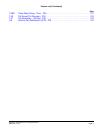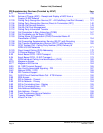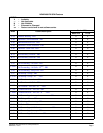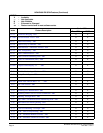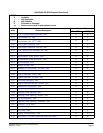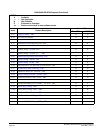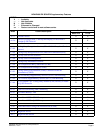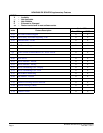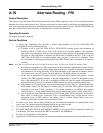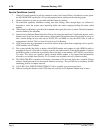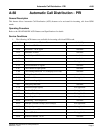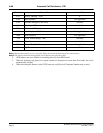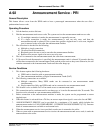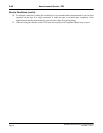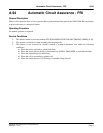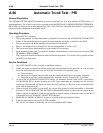
NEAX2400 IPX ISDN Features and Specifications
NDA-24311, Issue 1
Page 1
Alternate Routing - PRI A-76
A-76 Alternate Routing - PRI
General Description
This feature is provided with LCR, which automatically routes ISDN outgoing on-net calls over alternate facilities
when the first-choice trunk group is busy. The user selects the first-choice route by dialing the corresponding access
code. The equipment then routes the call through alternate trunk groups if the first is busy. The NEAX2400 IPX will
also add or delete digits, when necessary, to complete the call to the desired station.
Operating Procedure
No manual operation is required.
Service Conditions
1. A step-by-step explanation that provides a clearer understanding of how the NEAX2400 IPX
accomplishes Least Cost Routing follows:
a.) If dialing a toll or local call (NPA-XXX or NXX-XXXX), routing begins with translation of
three-digit (NPA or NXX) area or office code. In the case of specific numbers, this translation
may result in the immediate selection of the three-digit routing patterns. If the number dialed is an
NPA and six-digit translation is required, the NXX code is verified in the SCC (XX) or the FX
(XX) Table. If the NXX is not located in either table, see part C of this Service Condition. There
are a maximum of 256 Outgoing Pattern Routing (OPR) Tables with a maximum of 8 routes for
selection.
Note: SCC (XX) is a Special Common Carrier NXX Translation Table. FX (XX) is the FX NXX Translation Table.
b.) First choice route option is an NPA pattern that will most often be a Specialized Common Carrier.
If a trunk is available in this group, further digit translation is required to determine whether the
called number is served by the carrier. NXX digit translation is also required in instances where a
call is routed over a tie or FX trunk. For these purposes, 256 NXX patterns are available.
c.) In the case of Specialized Common Carriers, associated NXX patterns will return a Yes/No
answer to the PBX, indicating whether or not the dialed number is within the designated service
area of the selected SCC. If service is available, the PBX will seize the trunk and complete the
connection. If the No answer is returned, the PBX searches for the next available trunk group.
d.) Calls routed over FX trunk groups may require outpulsing of prefix digit “a,” depending upon the
NXX number dialed. For this purpose, another group of associated NXX patterns can be used,
operating on the same Yes/No principle. A Yes answer returned to the PBX in this instance
results in prefix “1” being added automatically before sending digits to the called Central Office.
e.) In a circumstance where the selected route is an FX trunk group, NXX translation can be used to
either allow or disallow the connection. This is accomplished using Yes/No answer from a
designated group of NXX patterns, and enables calls to selected Central Office areas to be
effectively restricted to only the most economical routes.
2. In certain cases, three- and six-digit translation provide sufficient information for identification of the
service area; 256 separate Outgoing Routing Patterns are provided for this.
3. Up to eight trunk routes can be in each Outgoing Routing Pattern.
4. STATION MESSAGE DETAIL RECORDING (SMDR) [S-10] can be used in conjunction with Least
Cost Routing. The route selected by the PBX is recorded by the SMDR unit.
5. Tie lines can be included in route patterns.
6. Application of NXX patterns provides for inclusion of multiple common carriers serving different areas.



